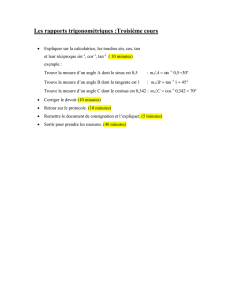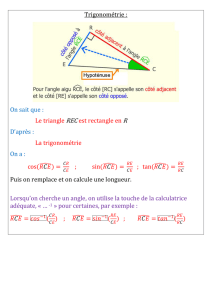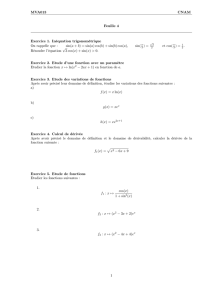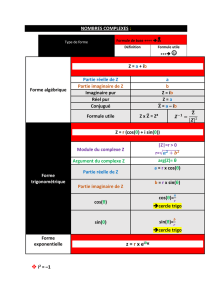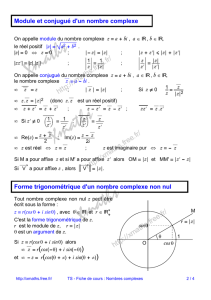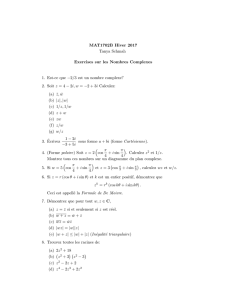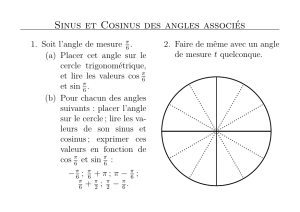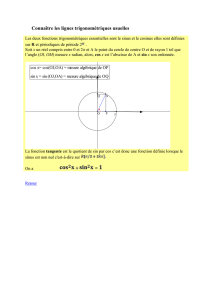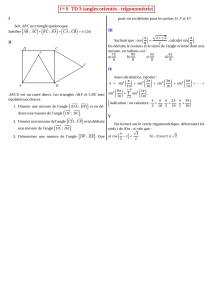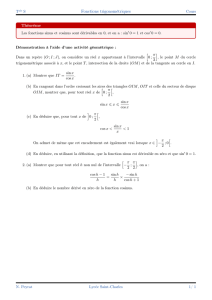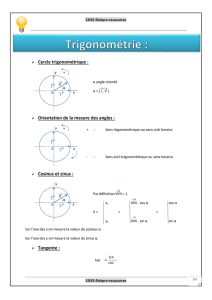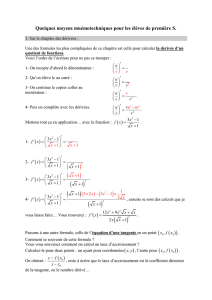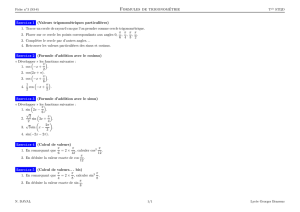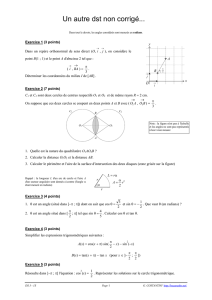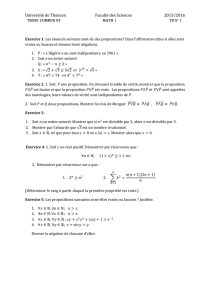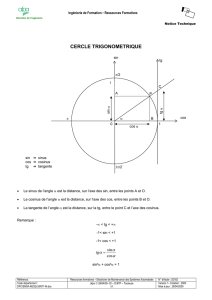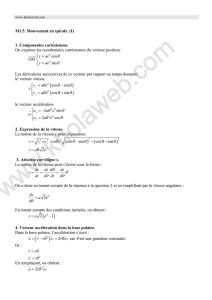Les nombres complexes 2002
publicité
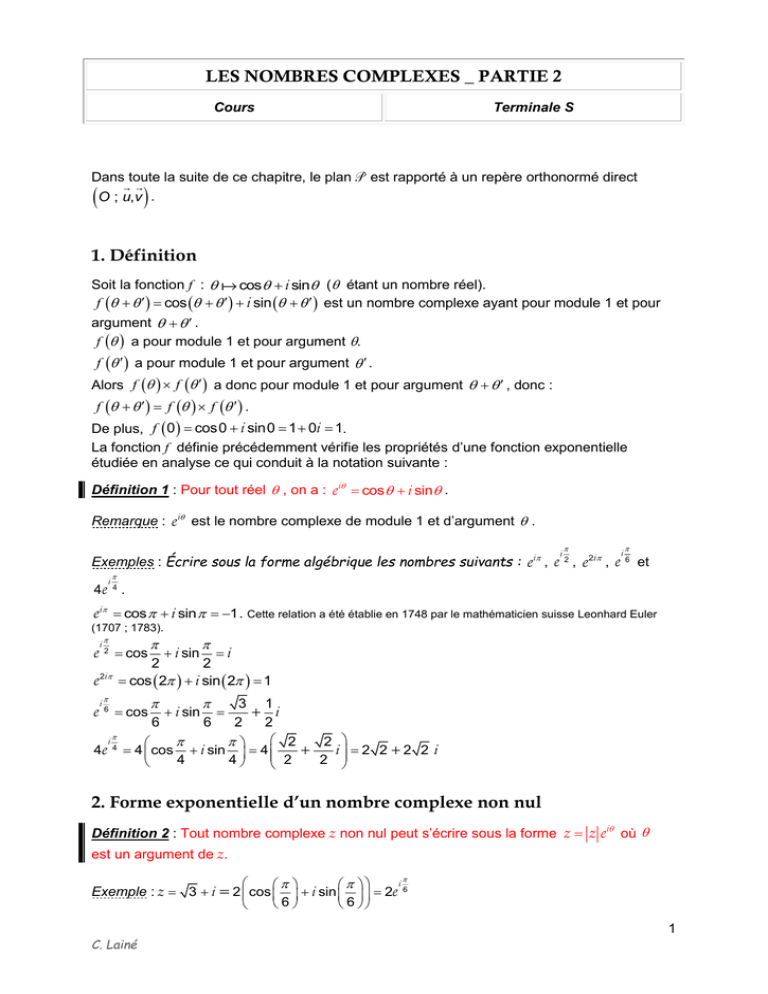
LES NOMBRES COMPLEXES _ PARTIE 2 Cours Terminale S Dans toute la suite de ce chapitre, le plan p est rapporté à un repère orthonormé direct O ; u,v . 1. Définition Soit la fonction f : cos i sin ( étant un nombre réel). f cos i sin est un nombre complexe ayant pour module 1 et pour argument . f a pour module 1 et pour argument . f a pour module 1 et pour argument . Alors f f a donc pour module 1 et pour argument , donc : f f f . De plus, f 0 cos0 i sin0 1 0i 1. La fonction f définie précédemment vérifie les propriétés d’une fonction exponentielle étudiée en analyse ce qui conduit à la notation suivante : Définition 1 : Pour tout réel , on a : ei cos i sin . Remarque : ei est le nombre complexe de module 1 et d’argument . i i Exemples : Écrire sous la forme algébrique les nombres suivants : ei , e 2 , e2i , e 6 et i 4e 4 . ei cos i sin 1 . Cette relation a été établie en 1748 par le mathématicien suisse Leonhard Euler (1707 ; 1783). i e 2 cos e2i i i i sin i 2 2 cos 2 i sin 2 1 3 1 + i 6 6 2 2 2 2 4 cos i sin 4 + i 2 2 +2 2 i 2 4 4 2 e 6 cos 4e 4 i sin 2. Forme exponentielle d’un nombre complexe non nul Définition 2 : Tout nombre complexe z non nul peut s’écrire sous la forme z z ei où est un argument de z. i Exemple : z 3 i = 2 cos i sin 2e 6 6 6 1 C. Lainé Application : Écrire sous la forme exponentielle les nombres suivants : z1 2i , z2 10 i et z3 3e 6 . z1 2i 2 . On a alors z1 i . z1 cos 0 Par suite, un argument de z1 est tel que . On en déduit que 2 sin 1 -i Par conséquent, z1 2e 2 . z2 10 10 . On a alors z2 1. z2 cos 1 Par suite, un argument de z2 est tel que . On en déduit que sin 0 Par conséquent, z2 10ei . i 2 . i i z3 3 1 e 6 3 ei e 6 3 e 6 i 3e 2 . 7 6 3. Propriétés Propriétés : Pour tous réels et , et pour tout entier naturel n : ei ei ei ei i e ei 1 ei e i ei n eni (formule de Moivre) ei e i Démonstrations : Ce sont des conséquences des propriétés 3. Remarques : La formule de Moivre s’écrit aussi cos i sin cos n i sin n . n Si on pose z ei , on a z e i . On obtient donc : cos Re z sin I m z ei e i 2i ei e i 2 et . Ces formules sont appelées formules d’Euler. De la première propriété, on en déduit que cos i sin cos i sin cos i sin . D’où cos cos sin sin i cos sin sin cos cos i sin Par identification des parties réelles et imaginaires des deux membres, on obtient les formules : cos cos cos sin sin et sin cos sin sin cos . Par suite, en prenant , on obtient : cos 2 cos 2 sin 2 2cos 2 1 1 2sin 2 et sin 2 2cos sin . 2 C. Lainé
